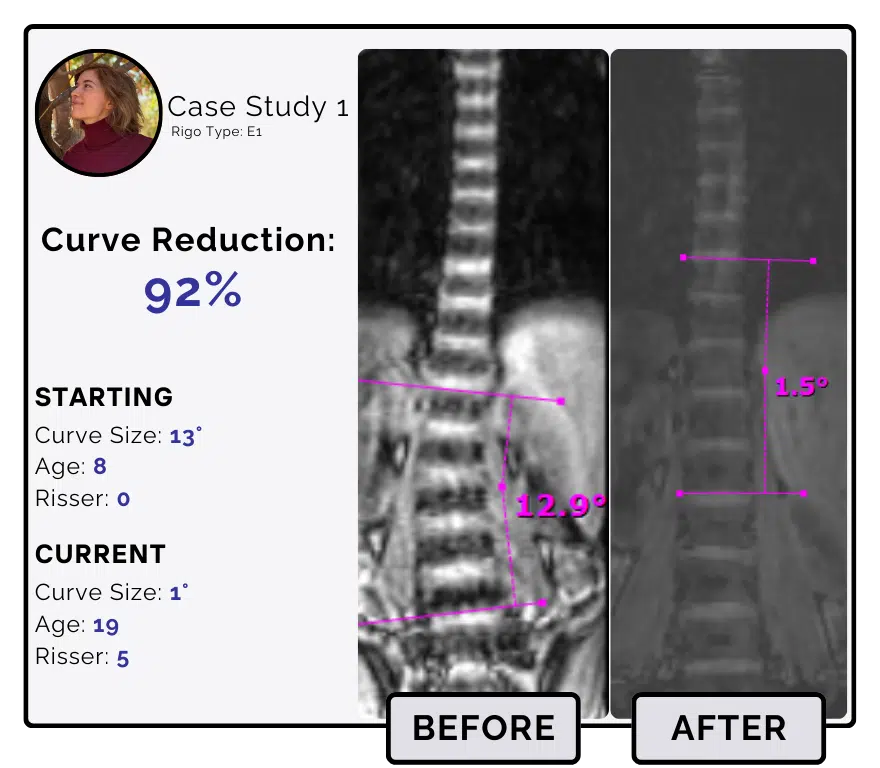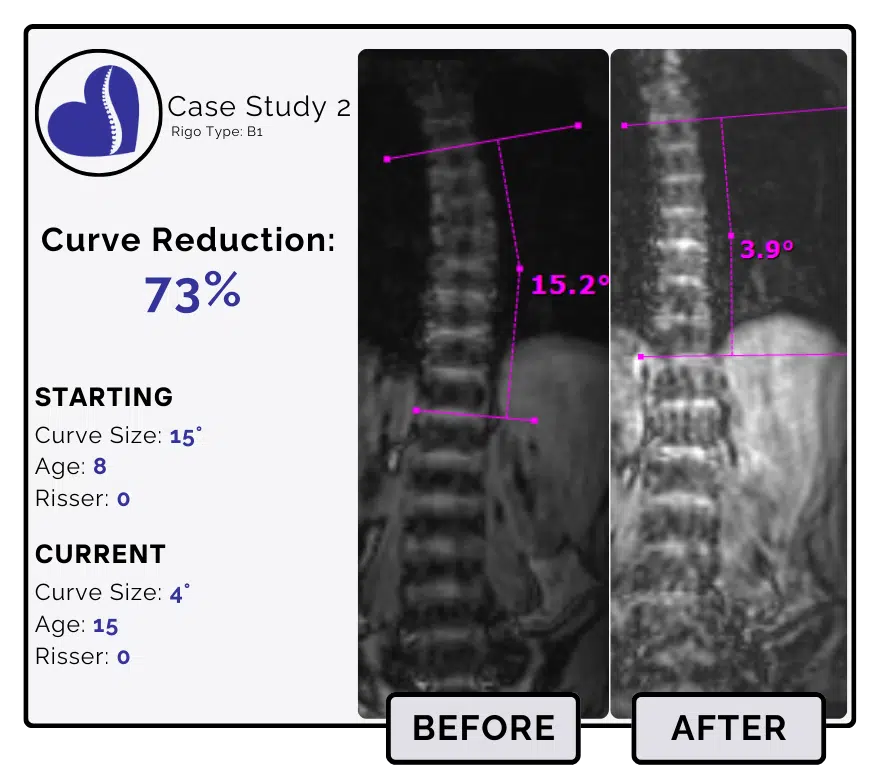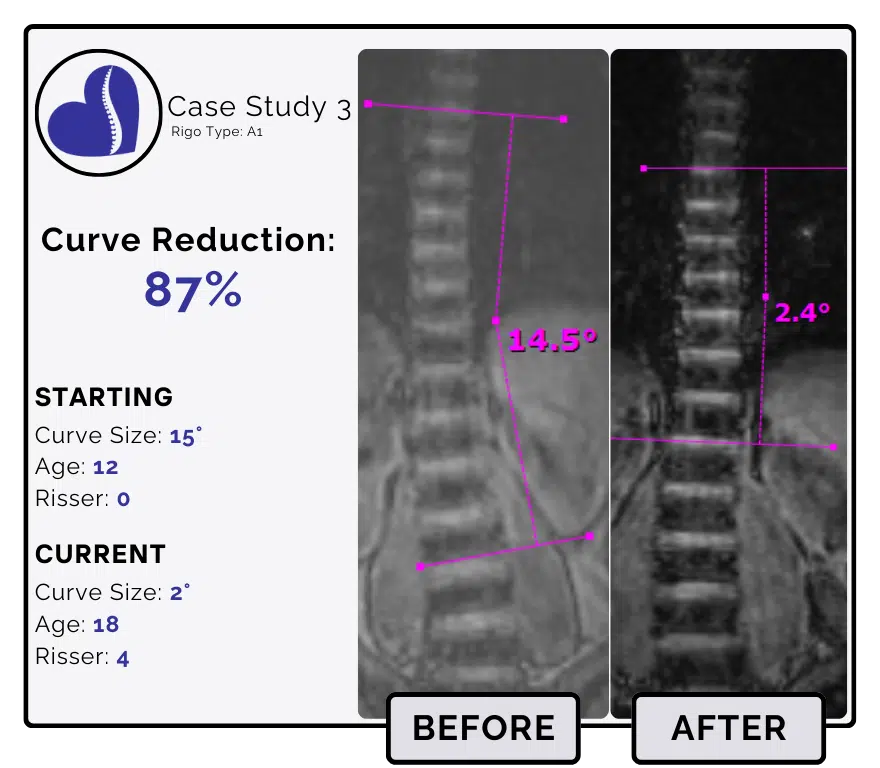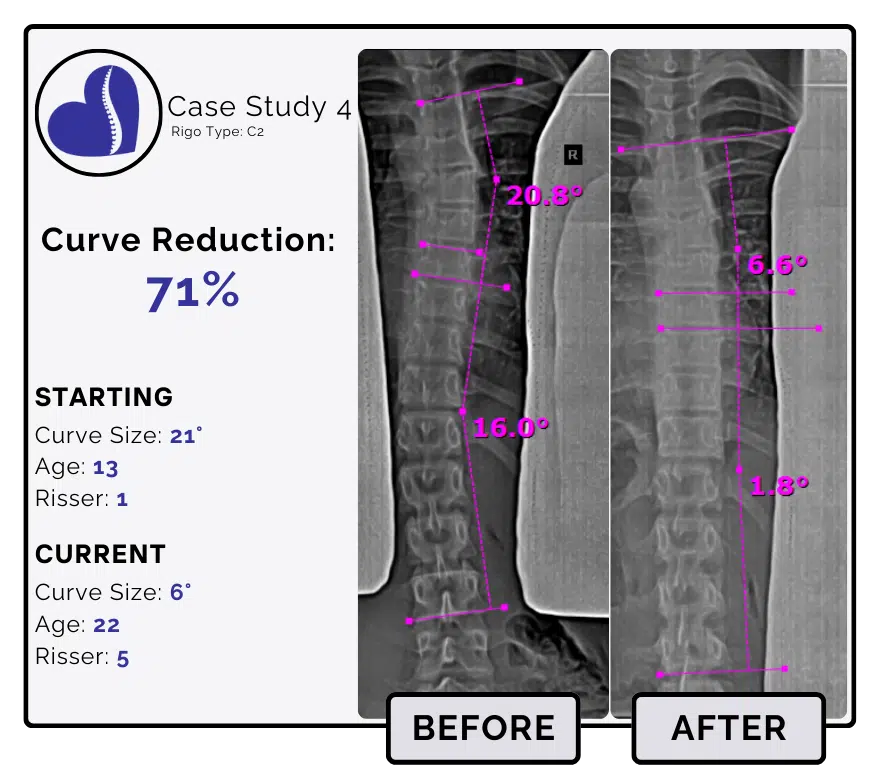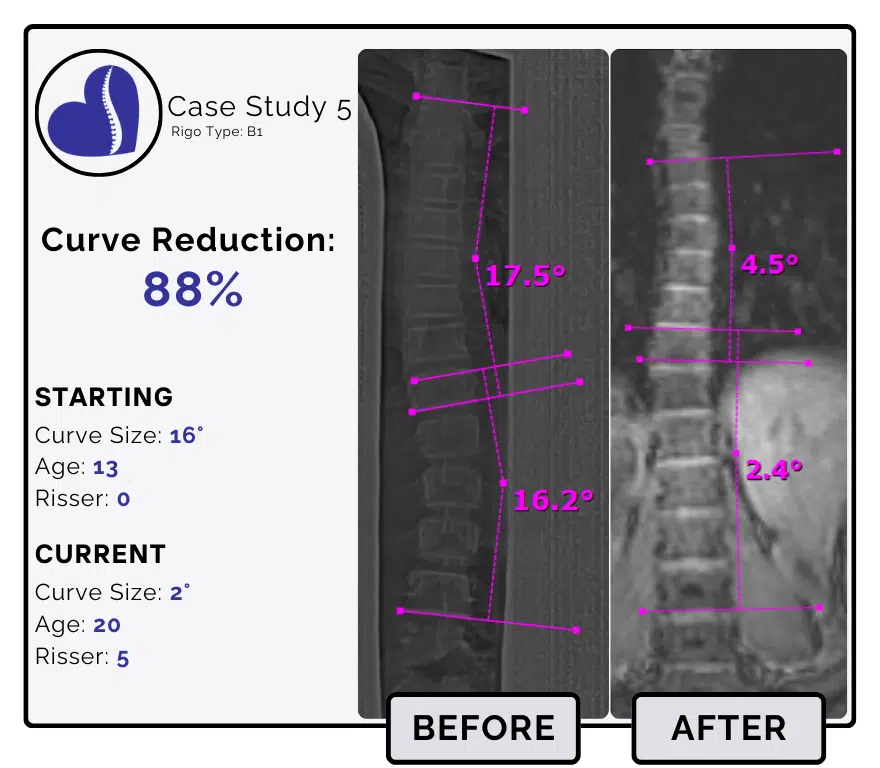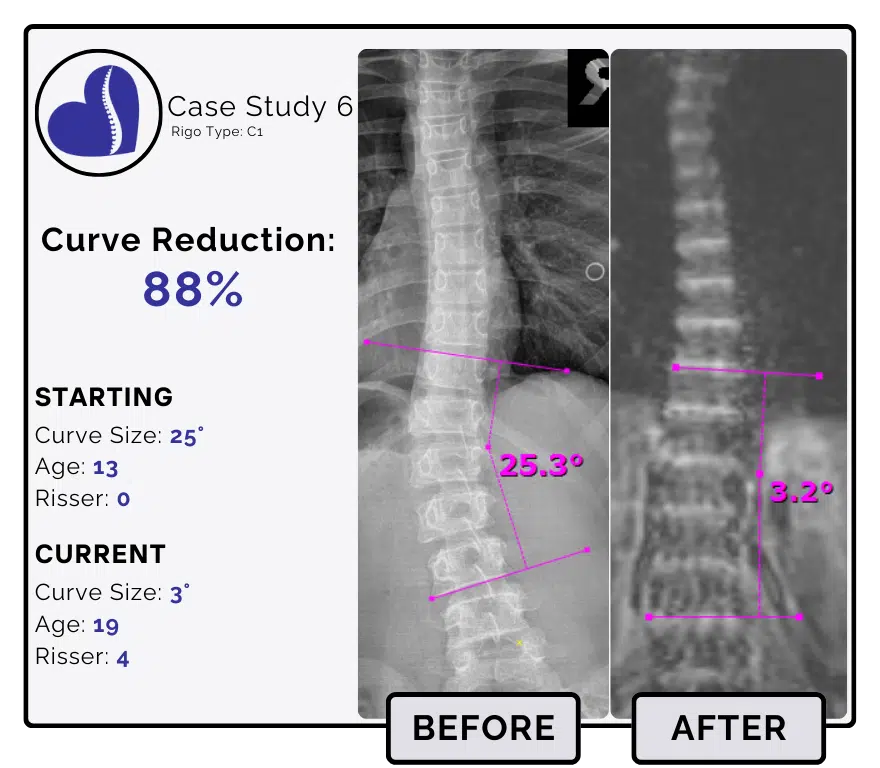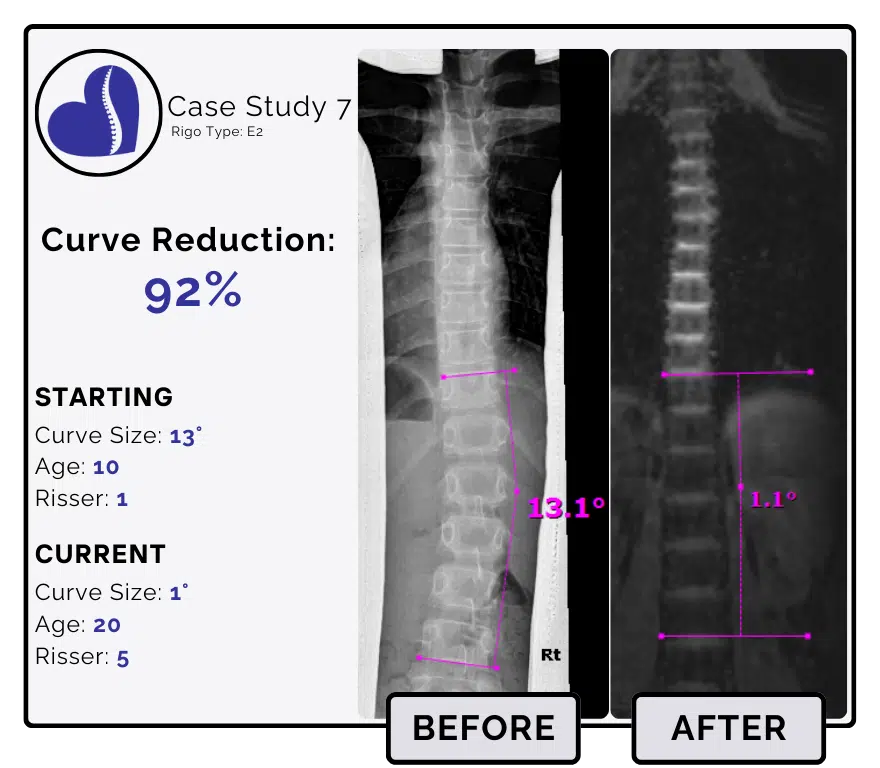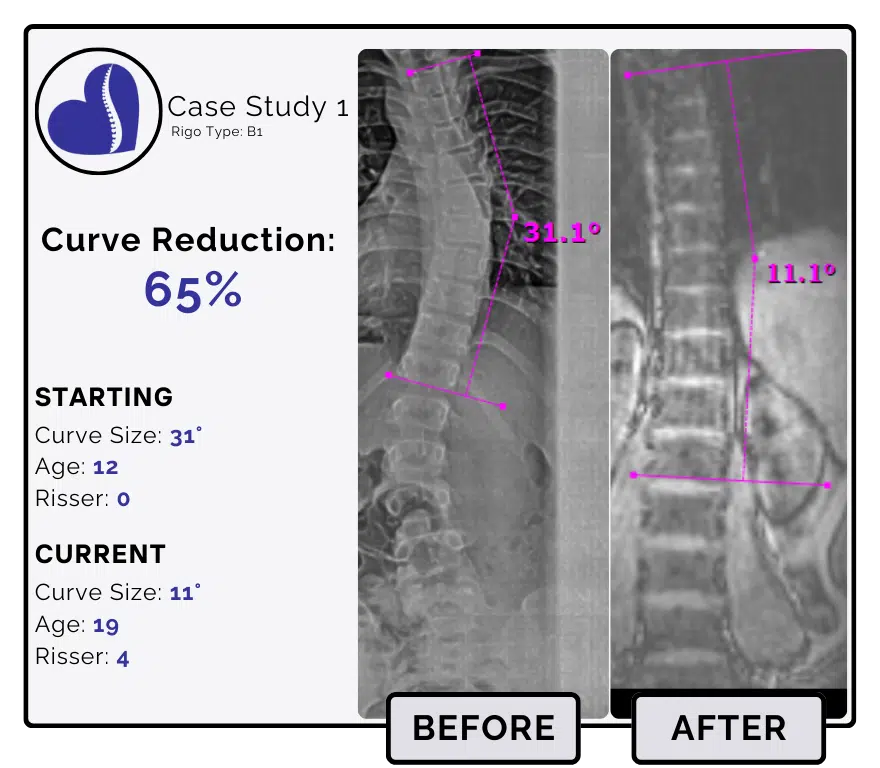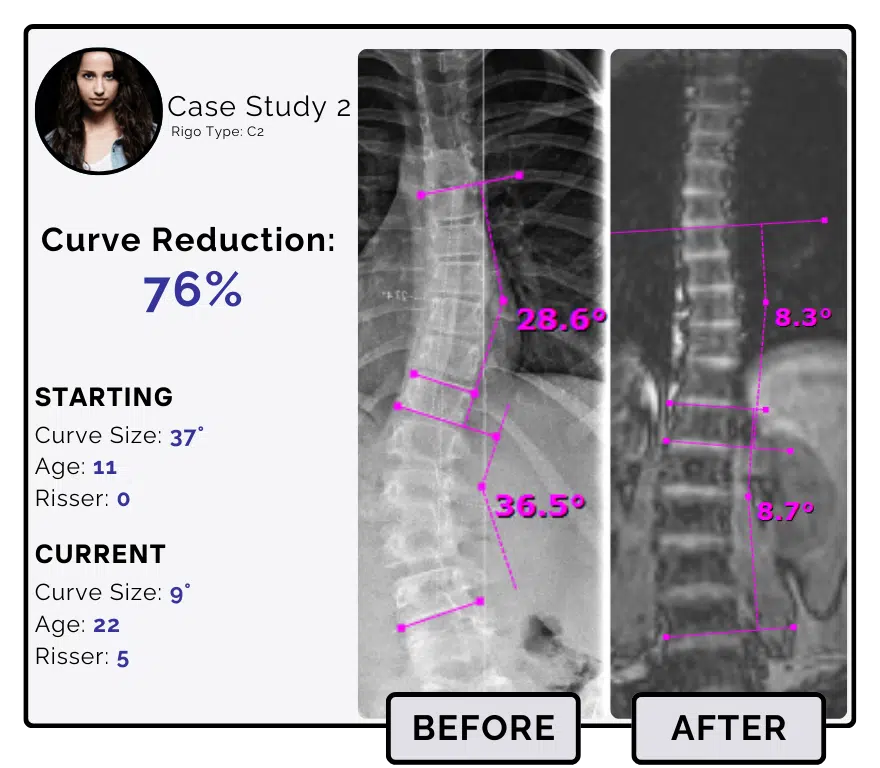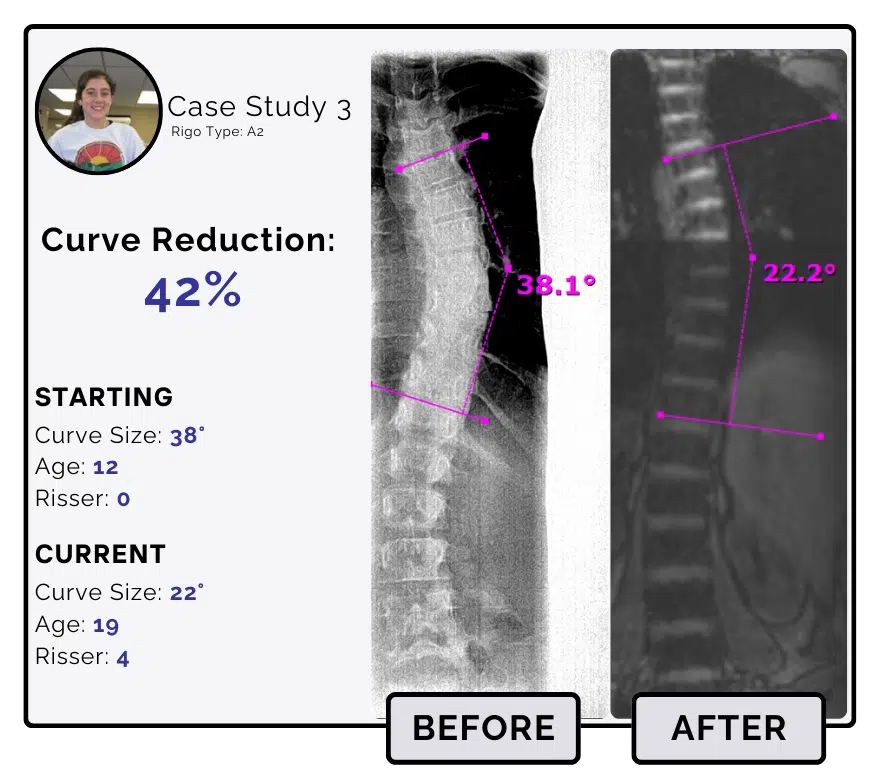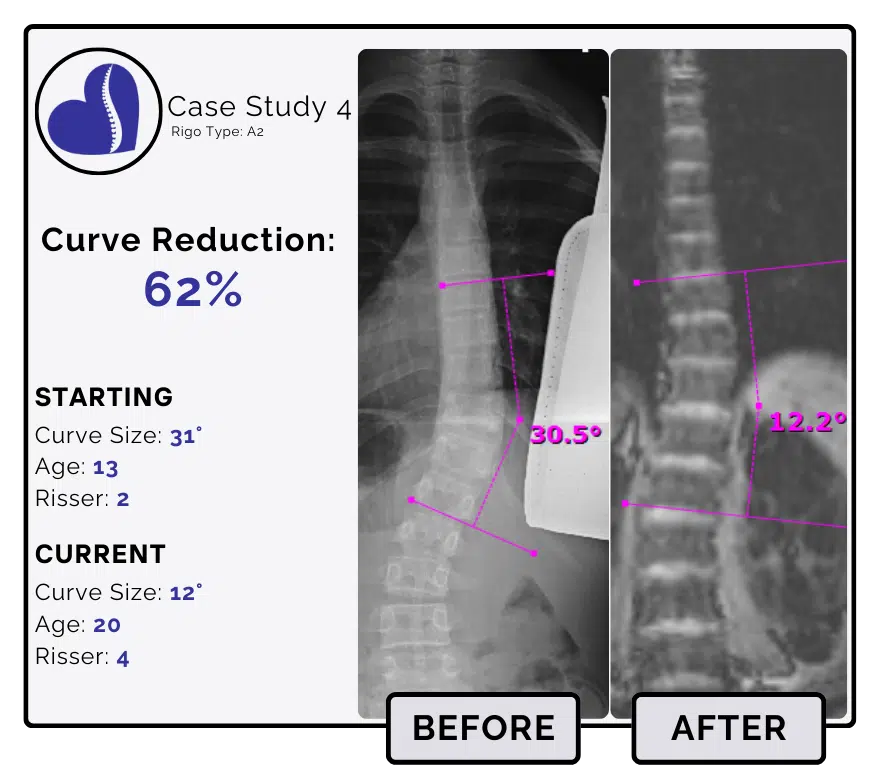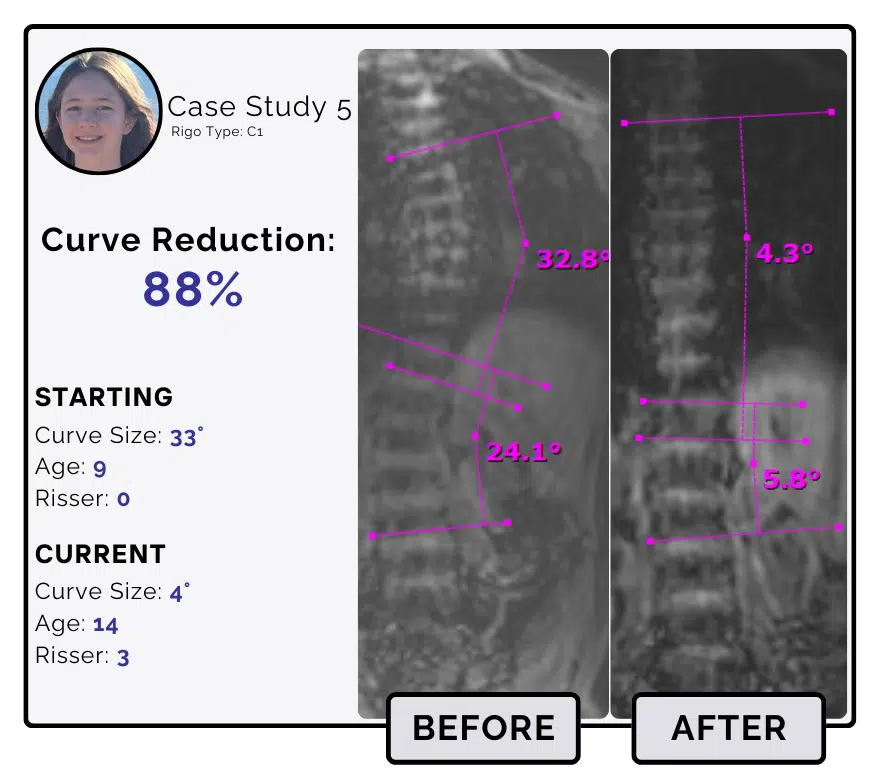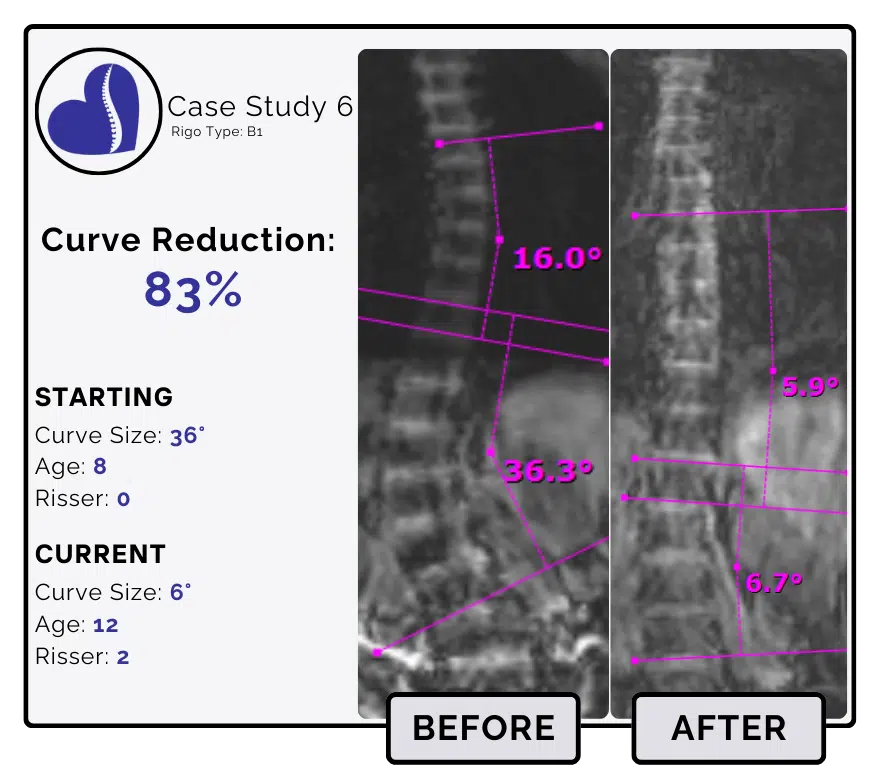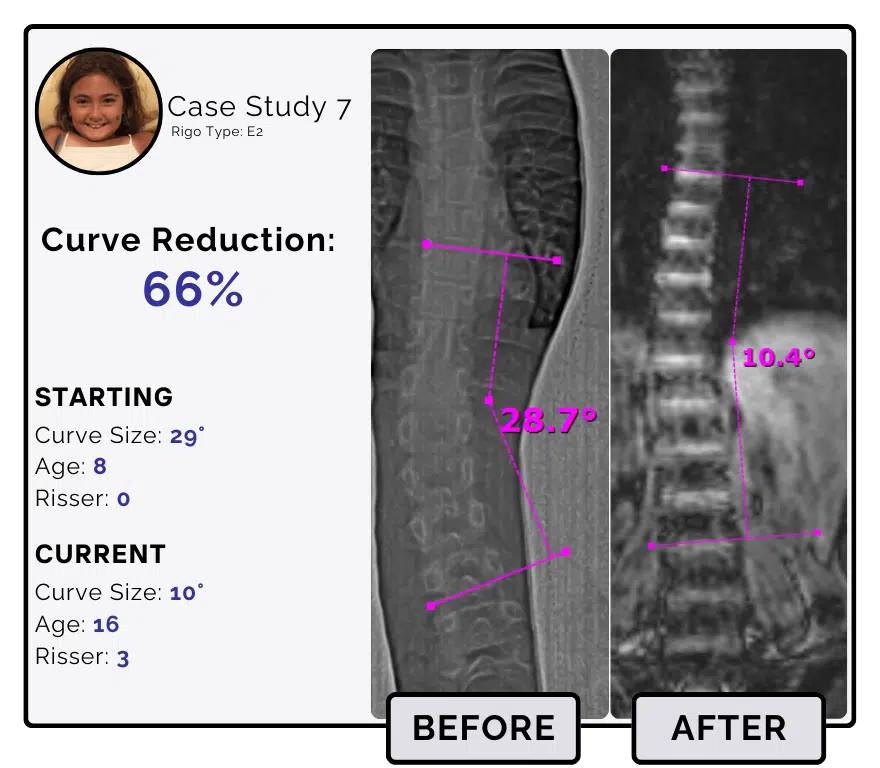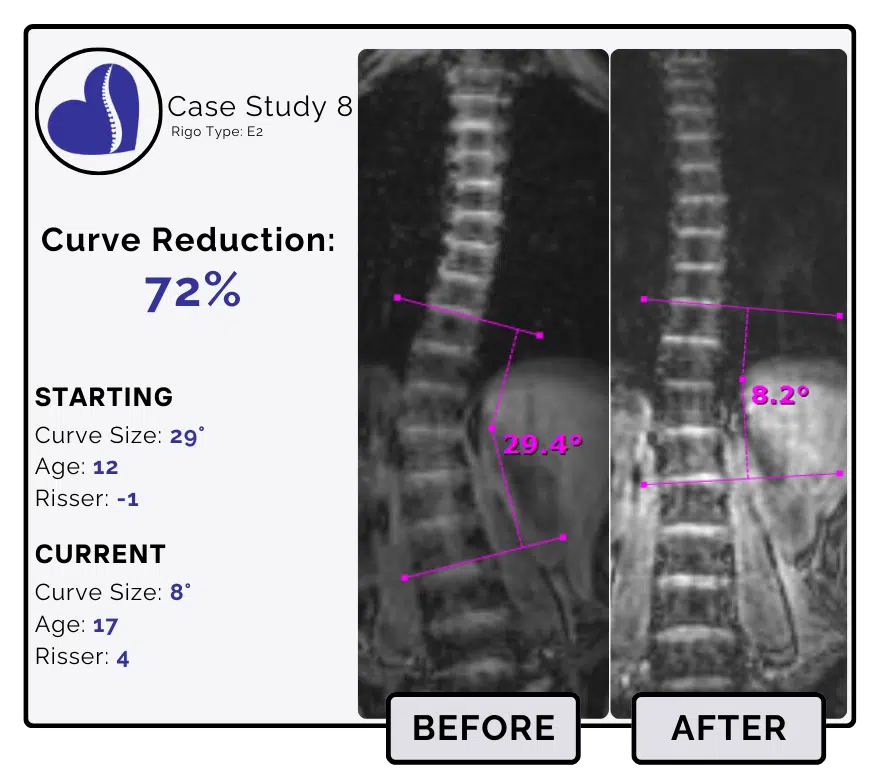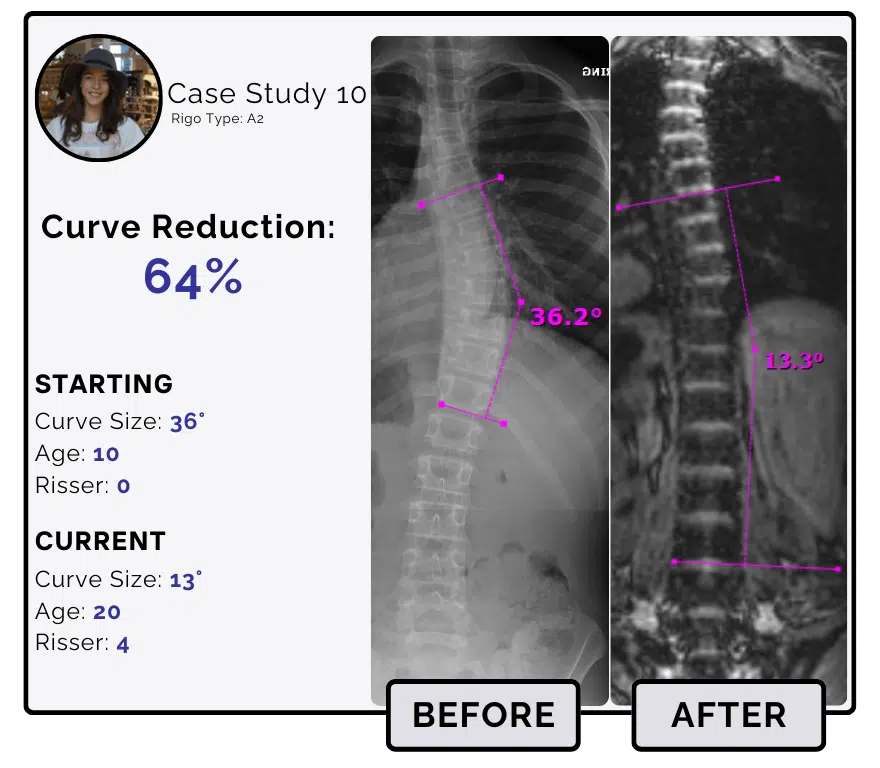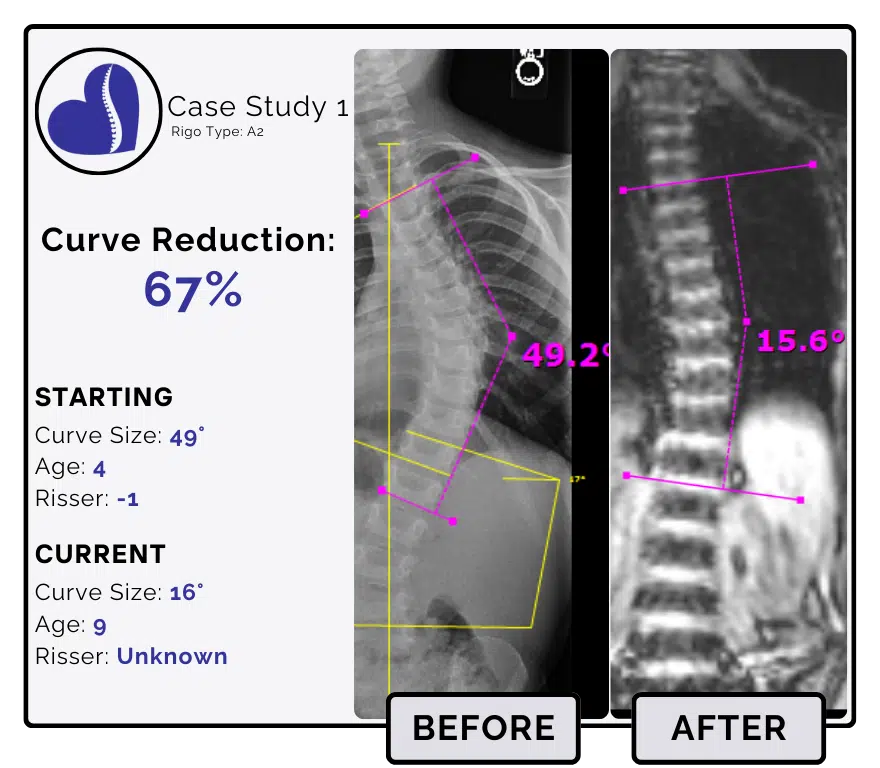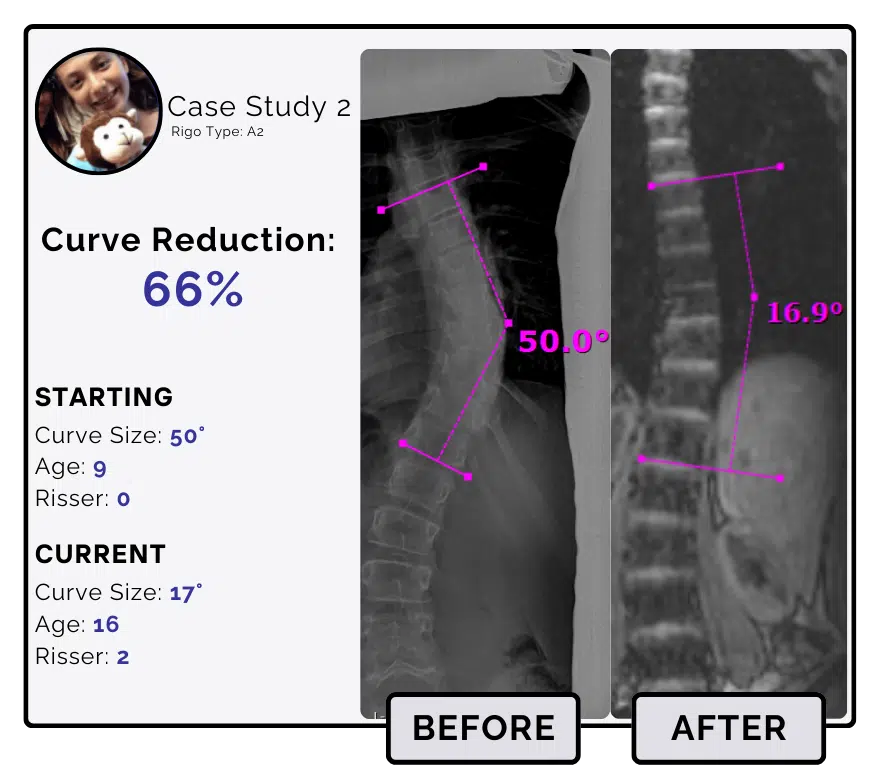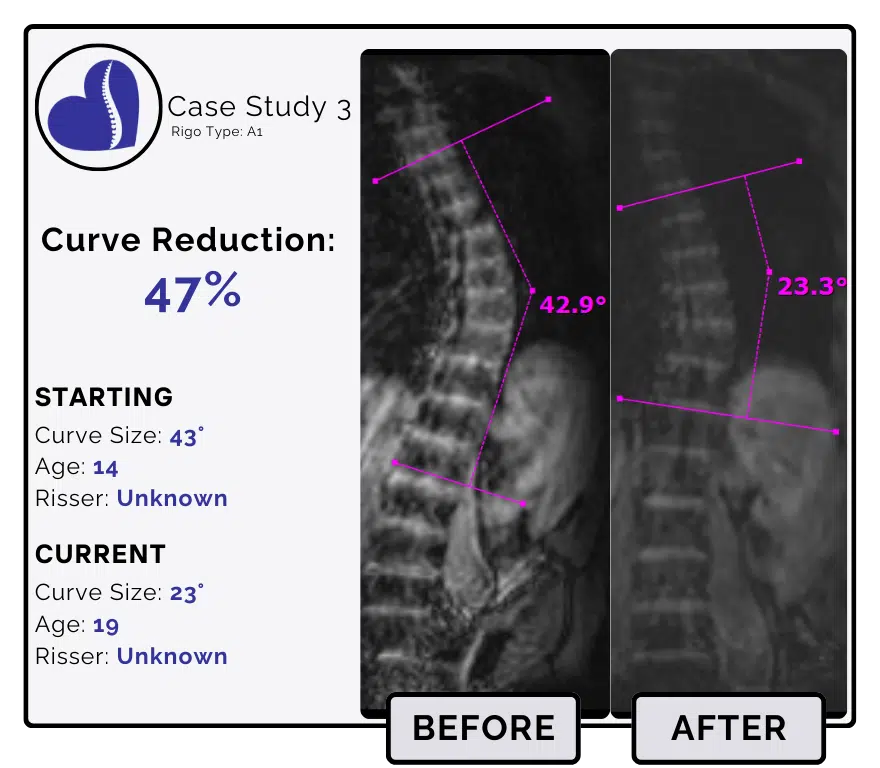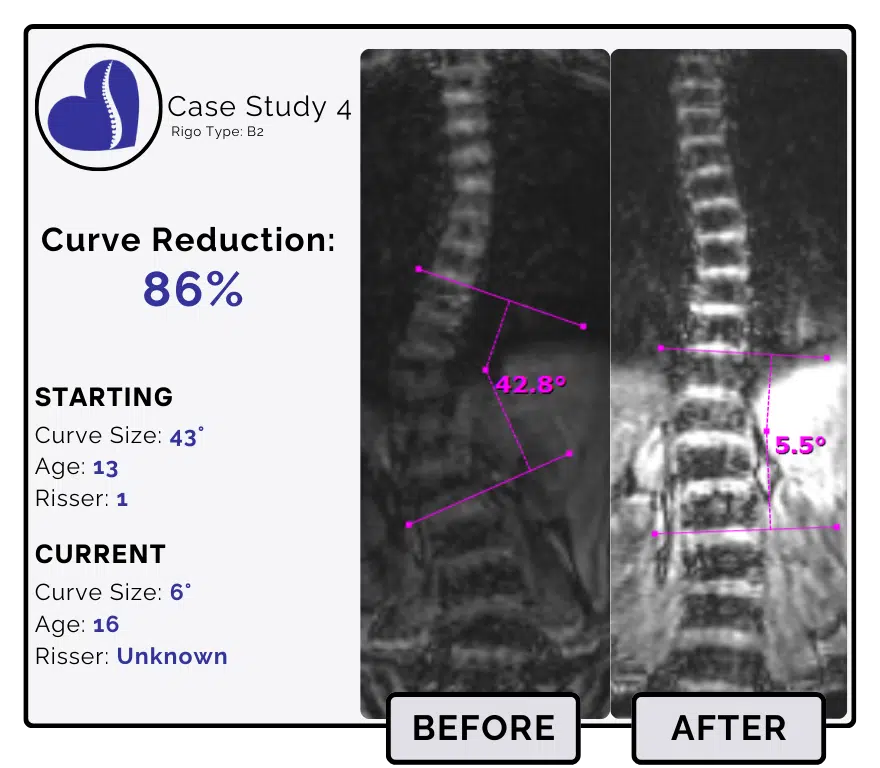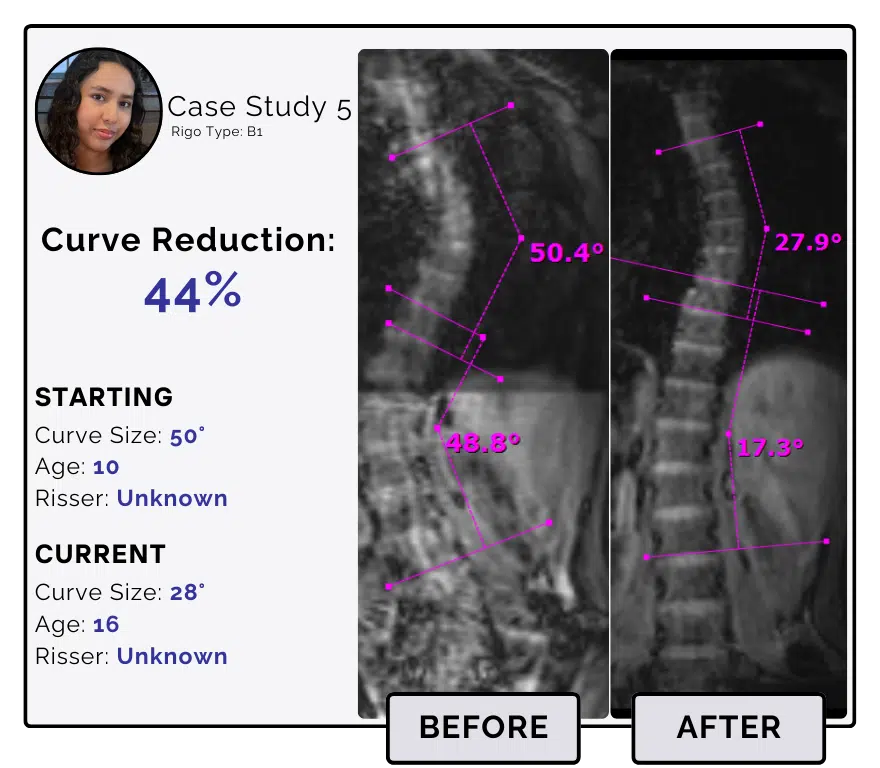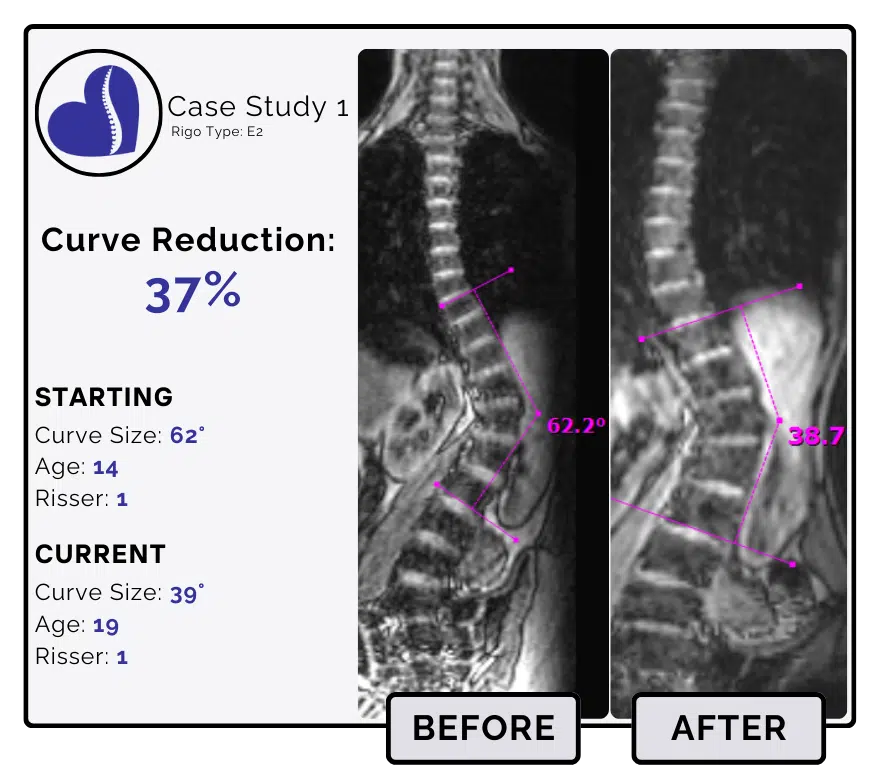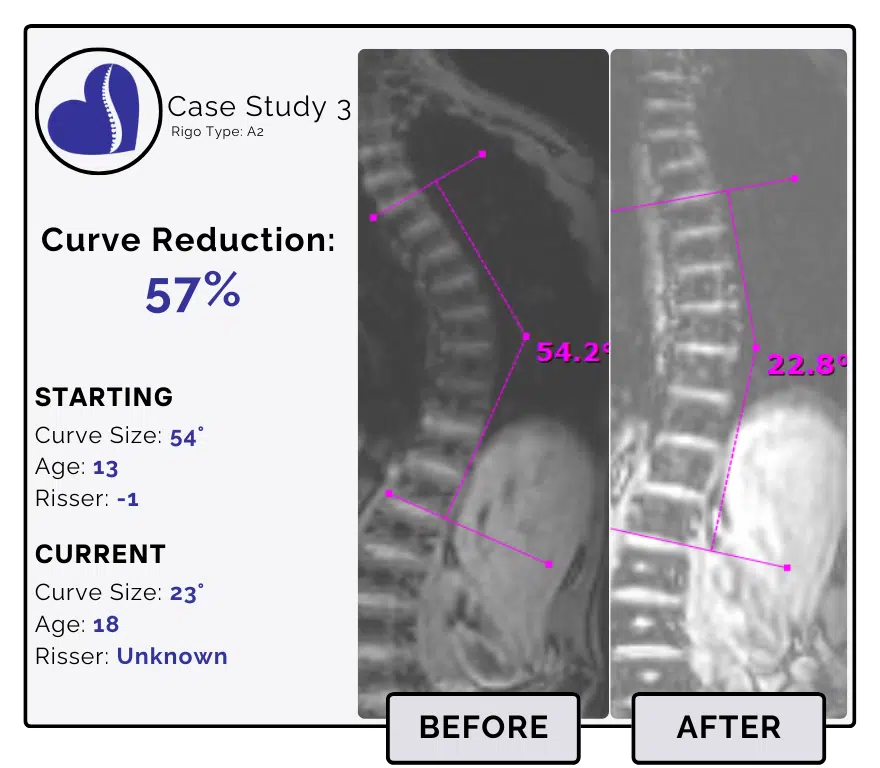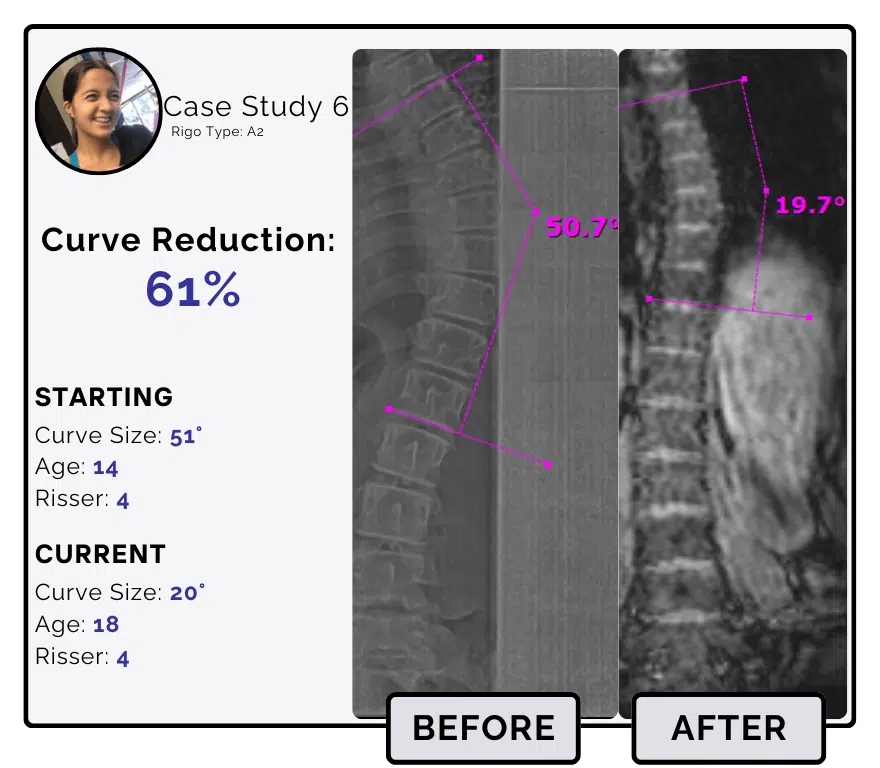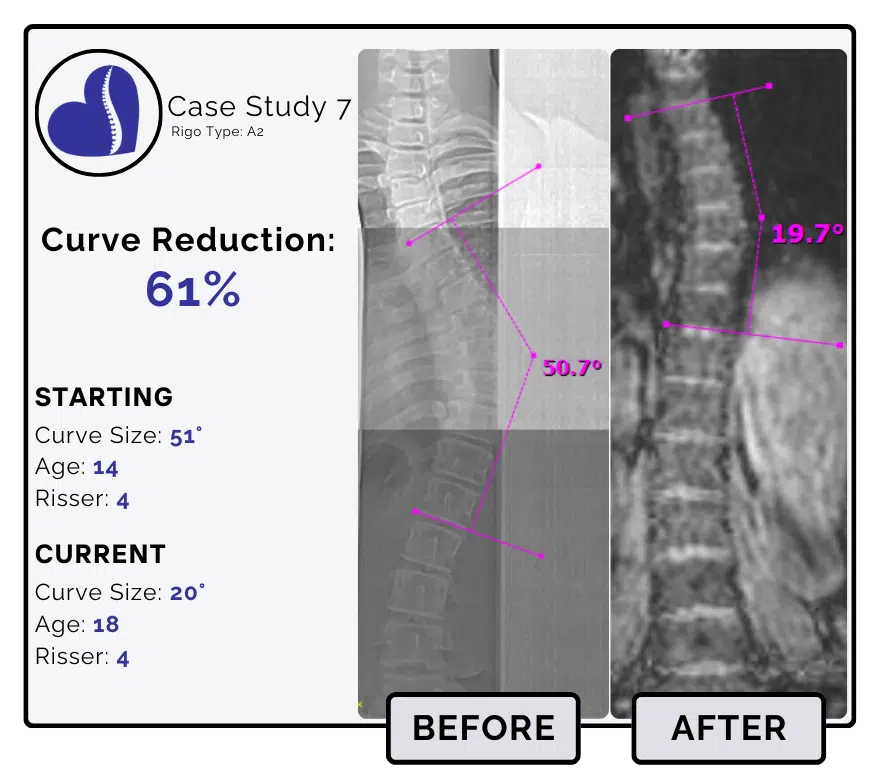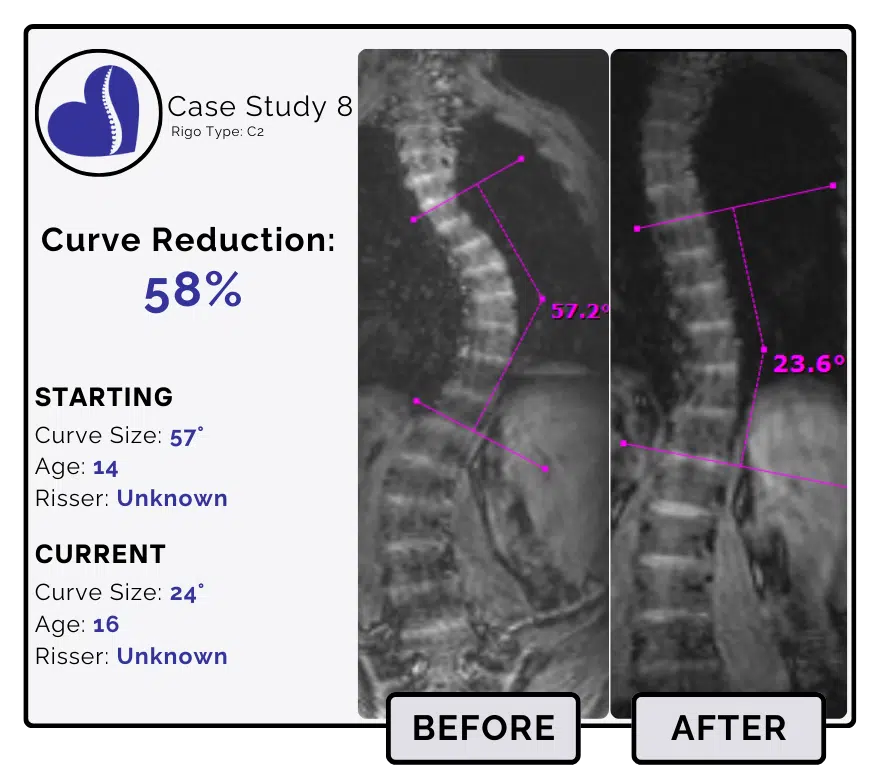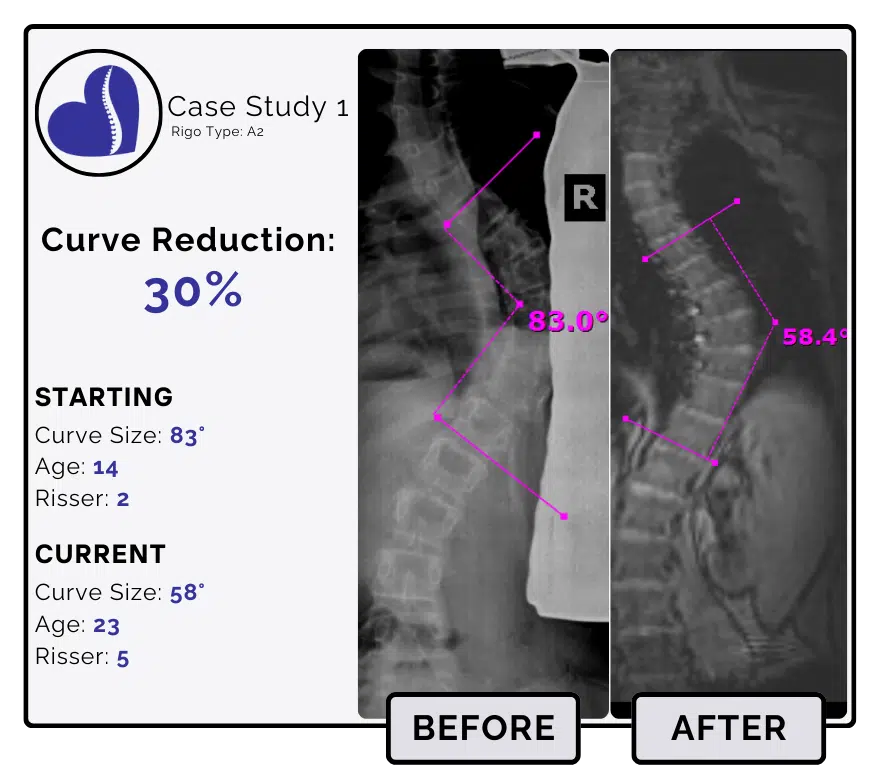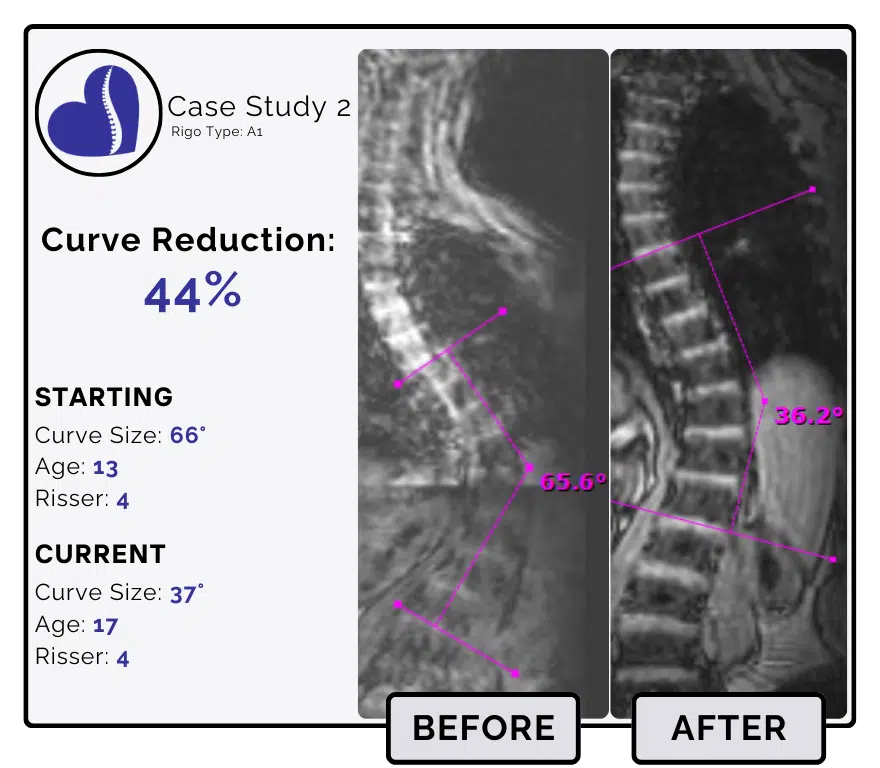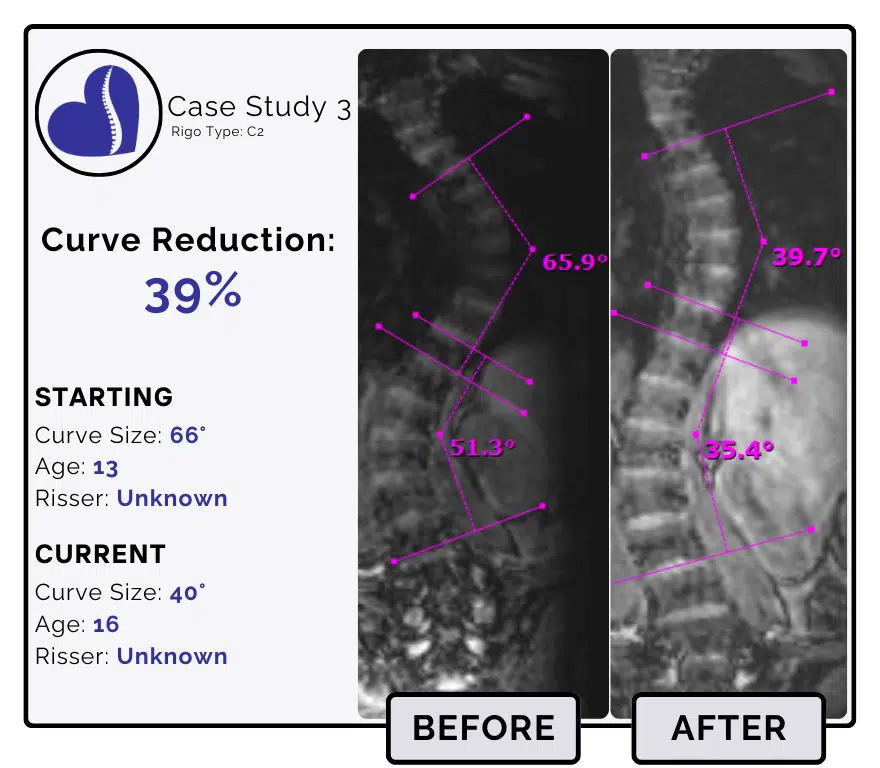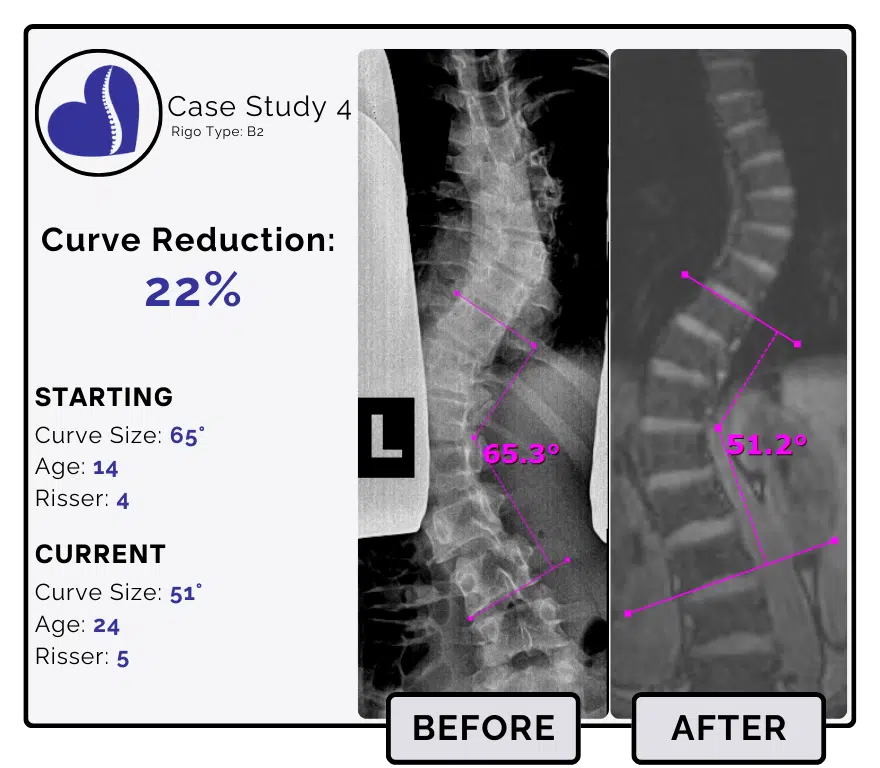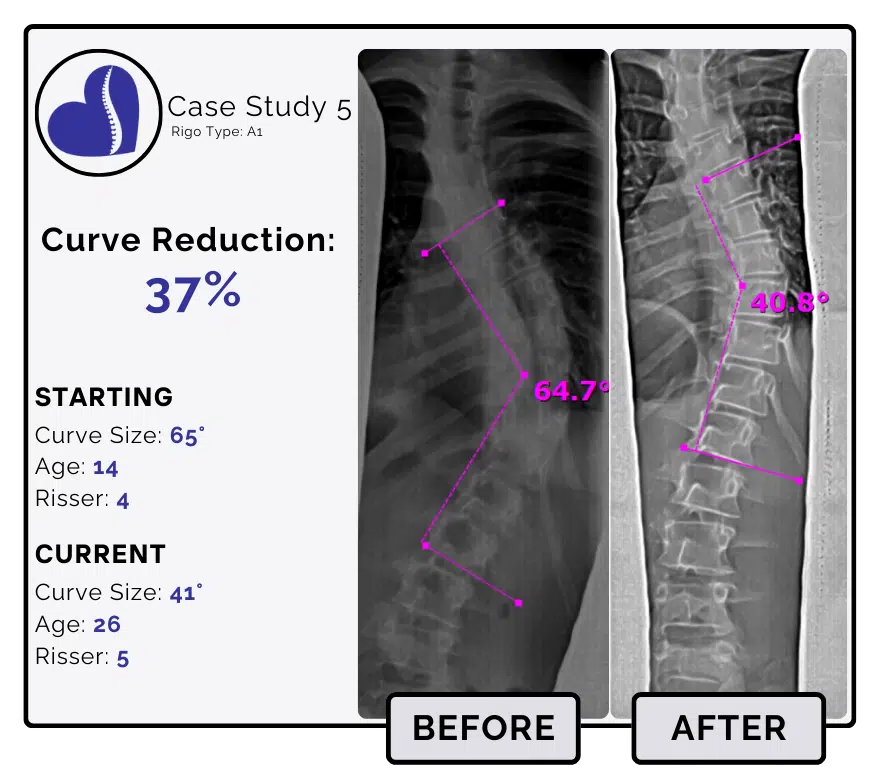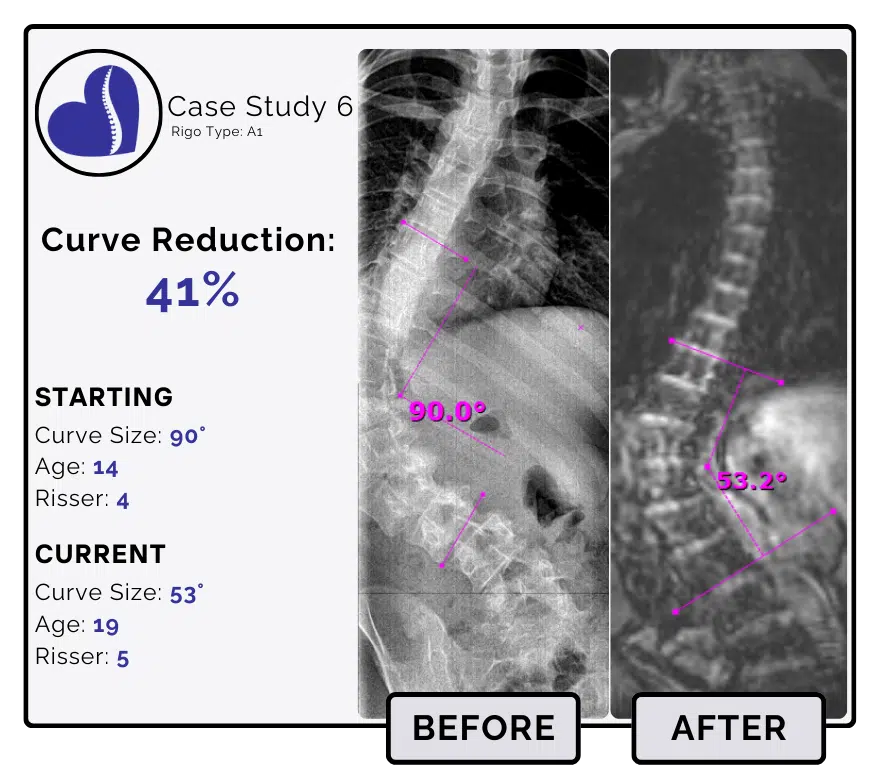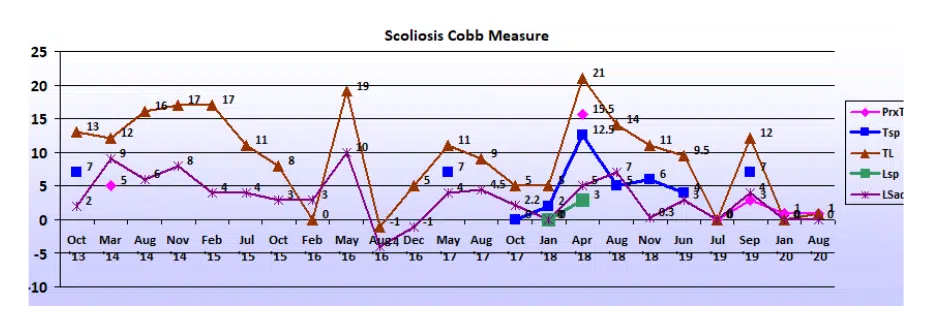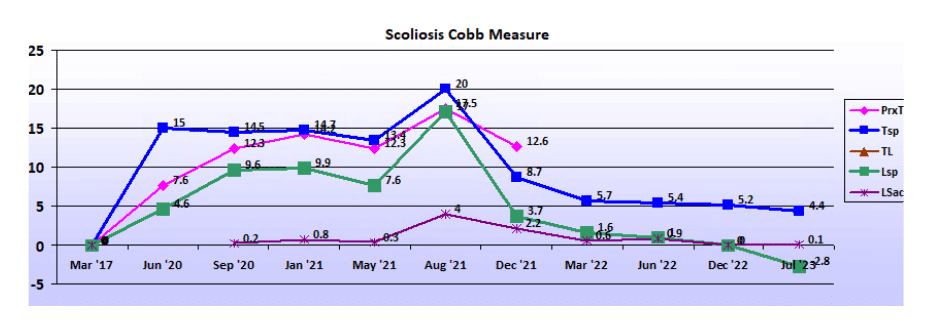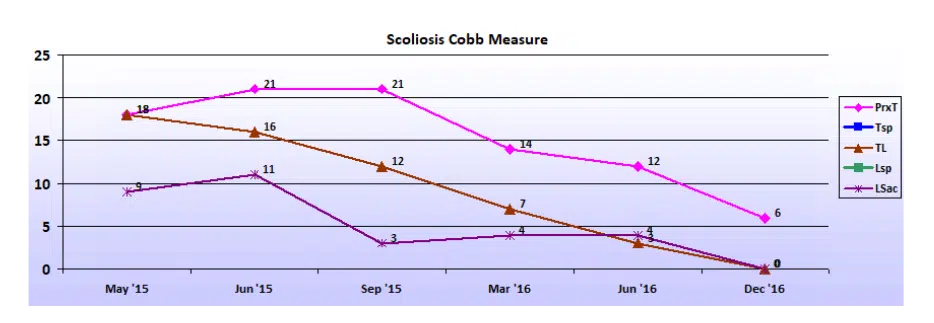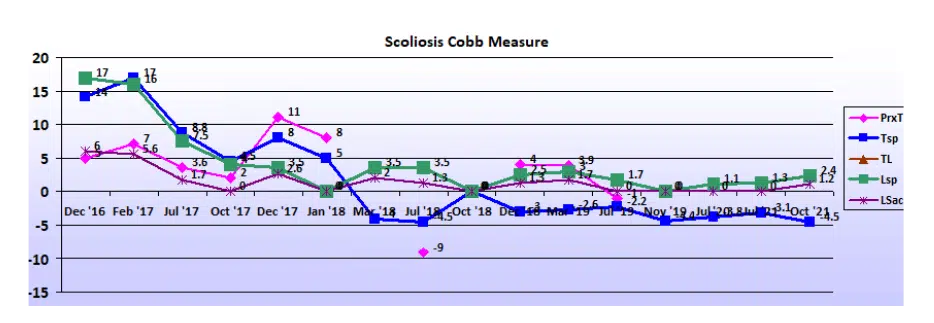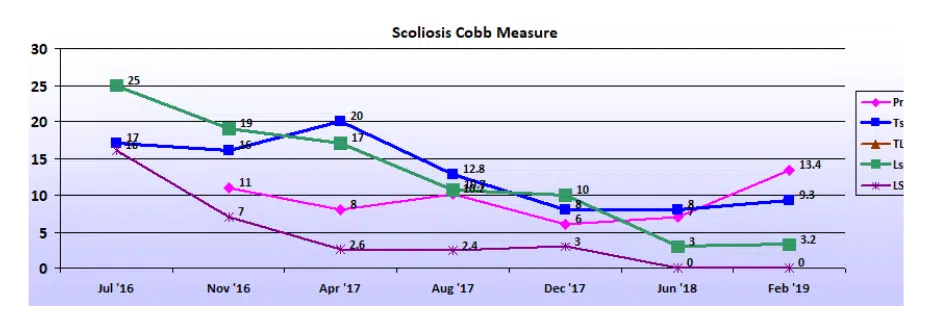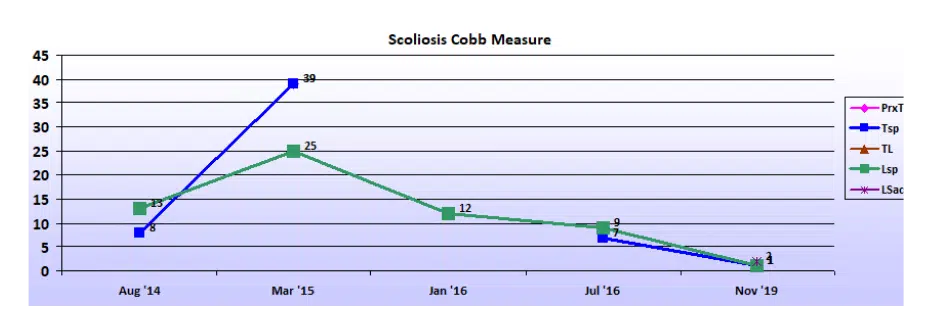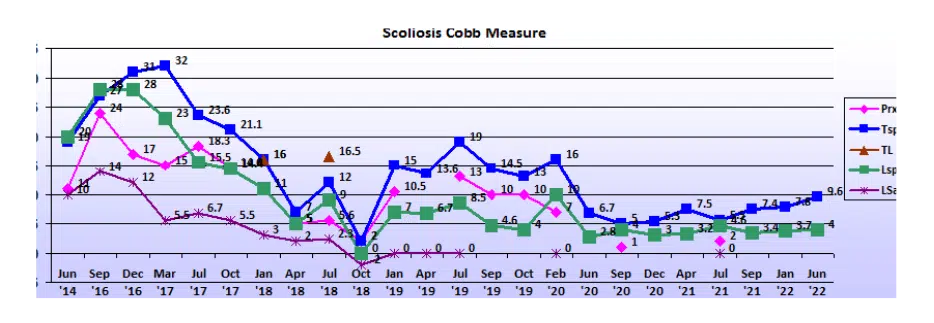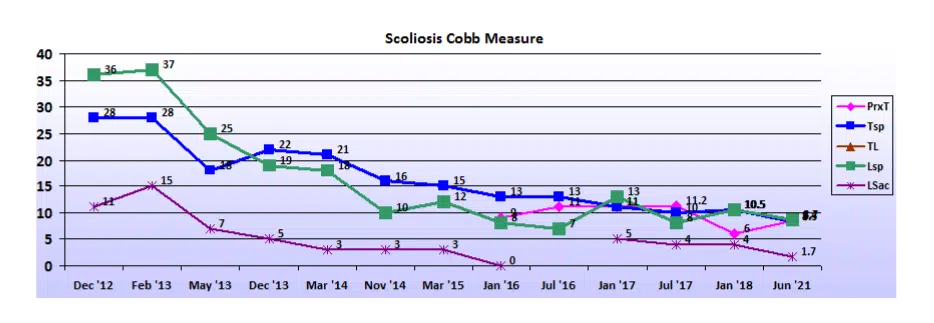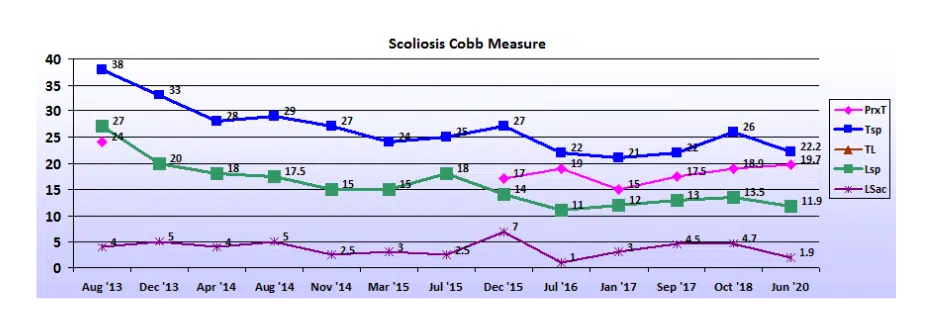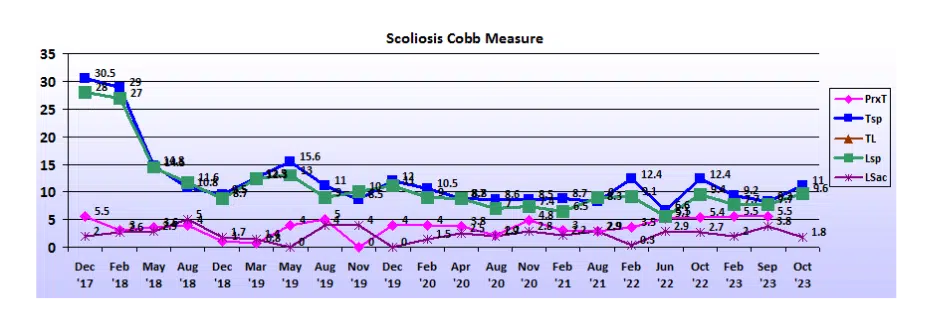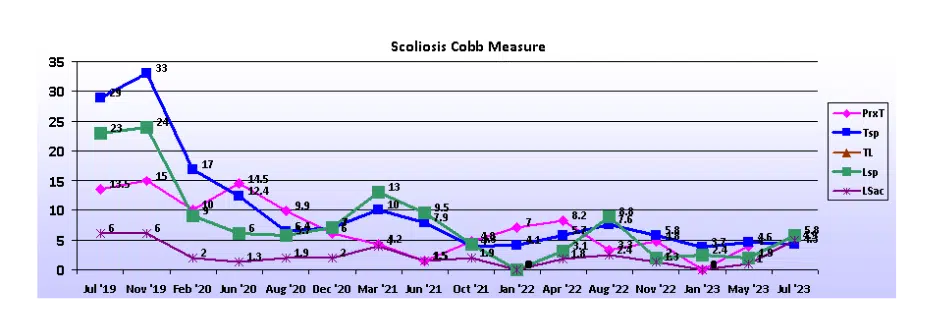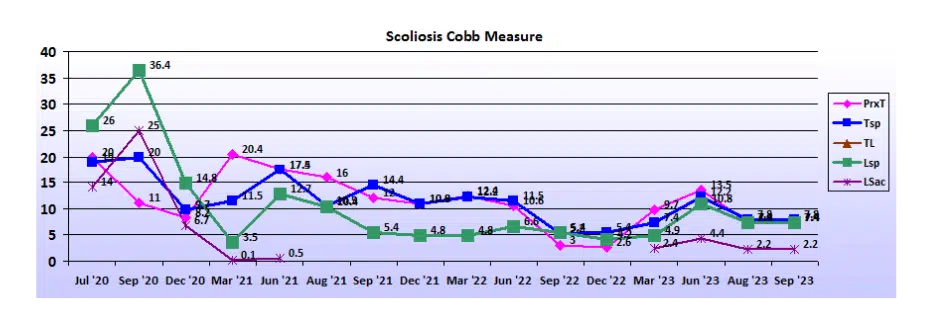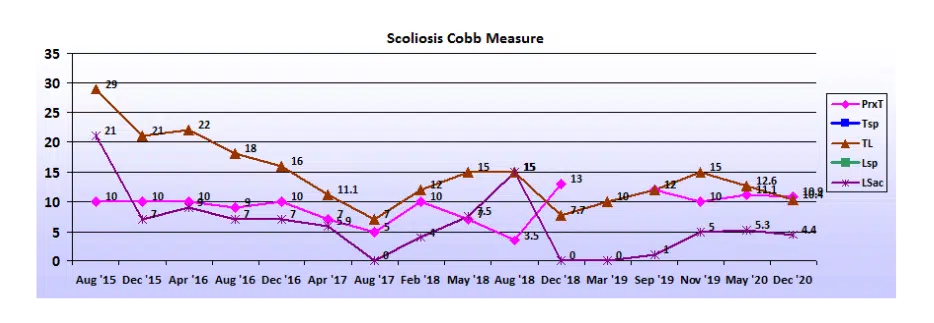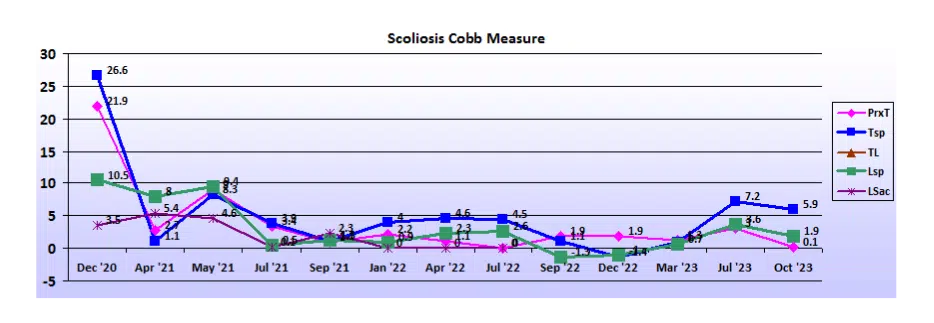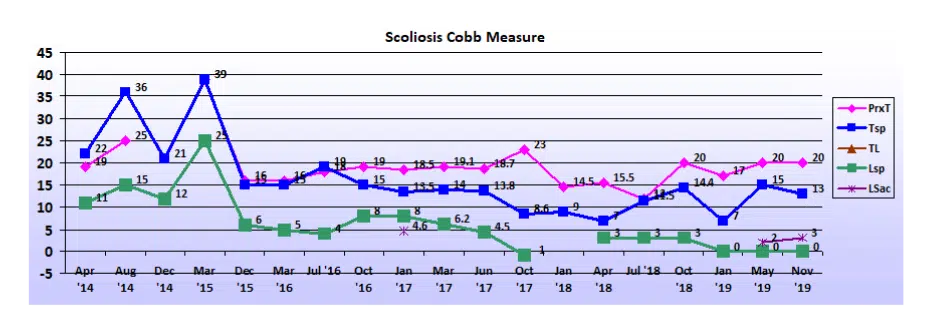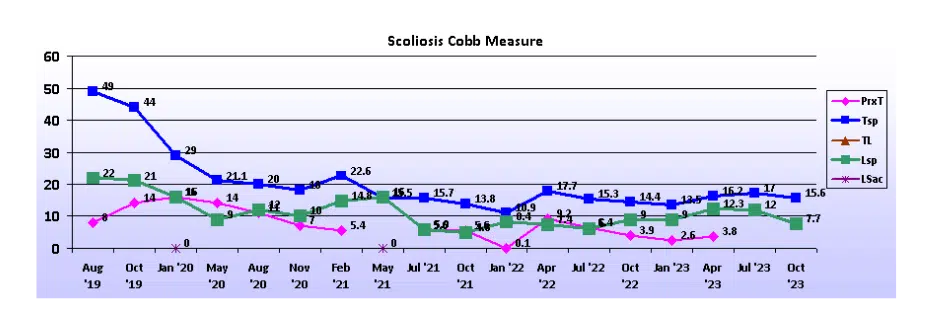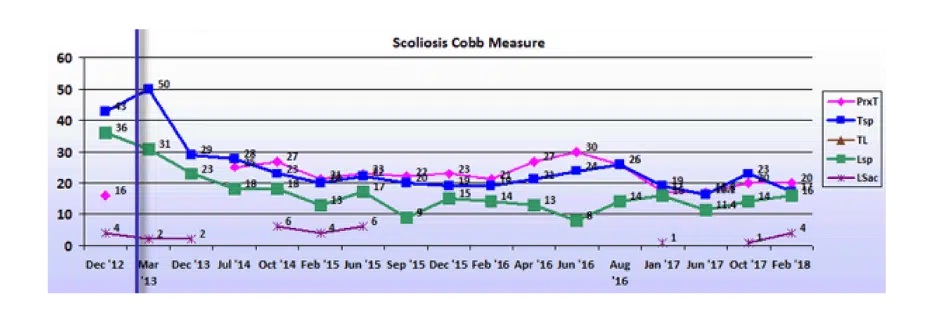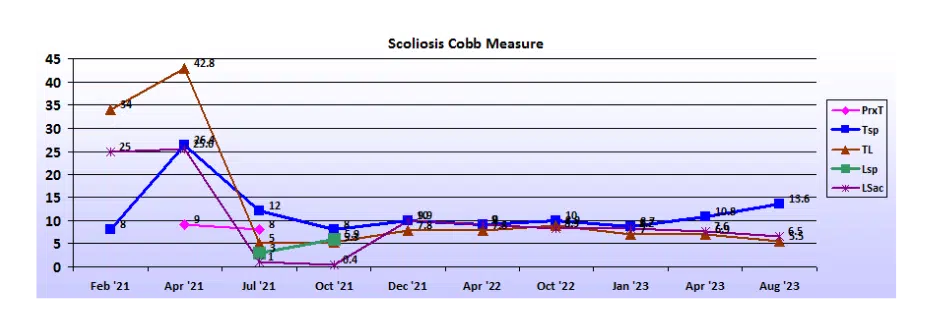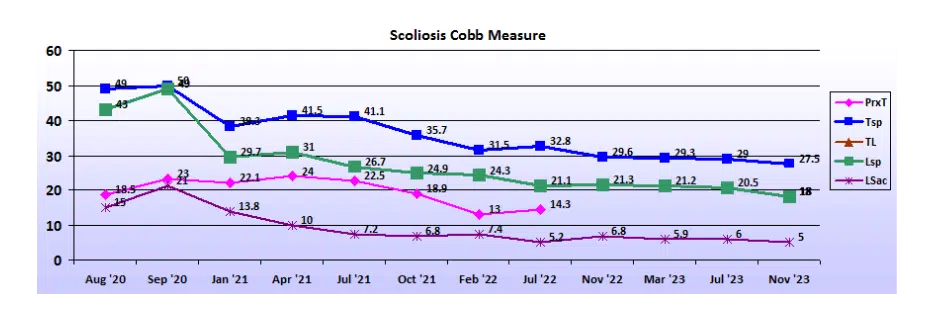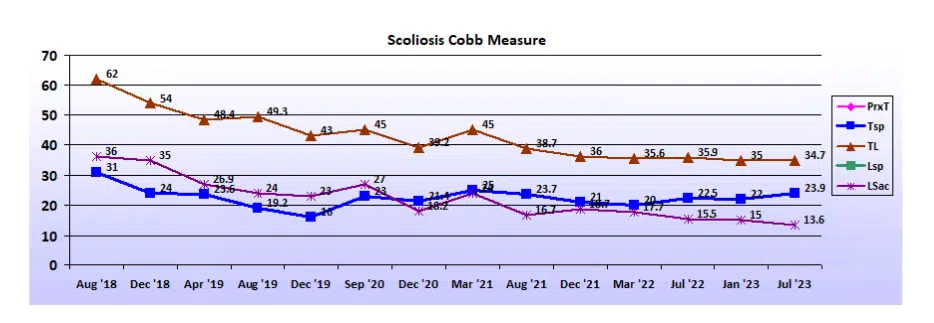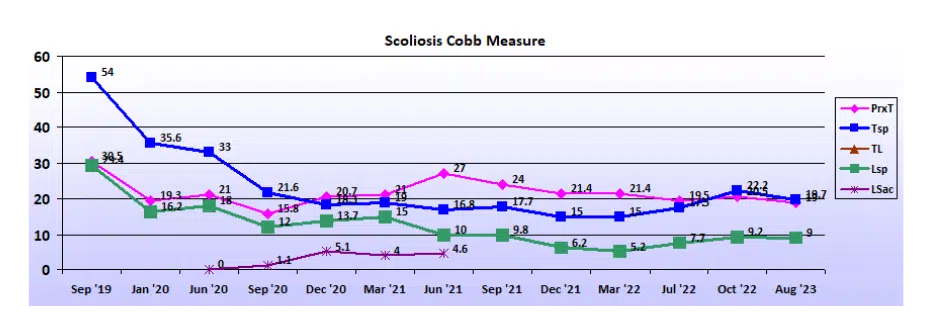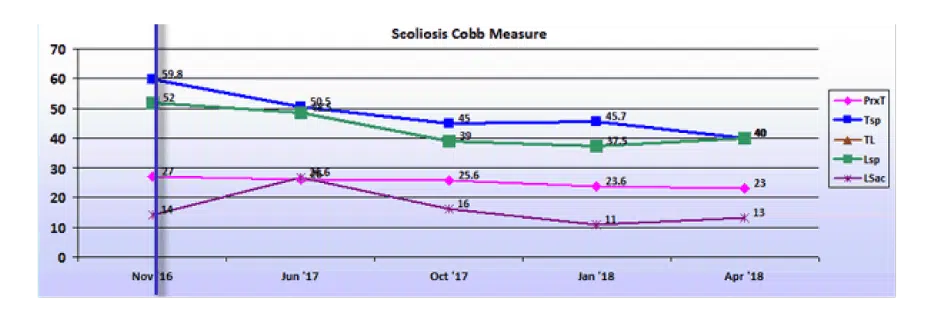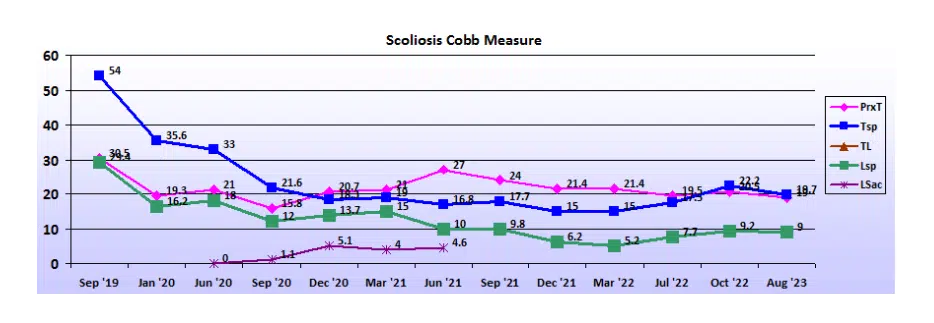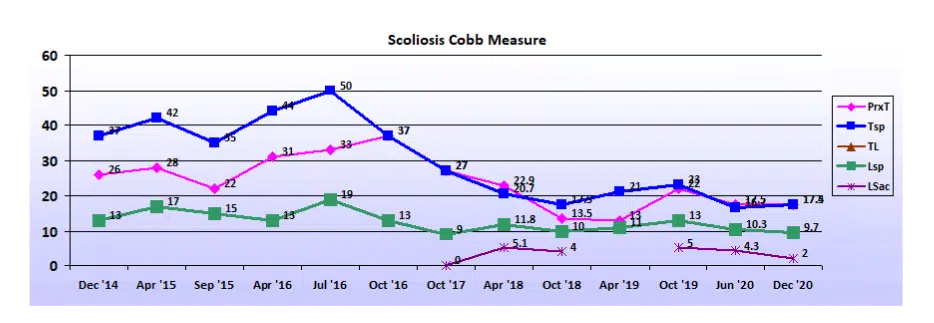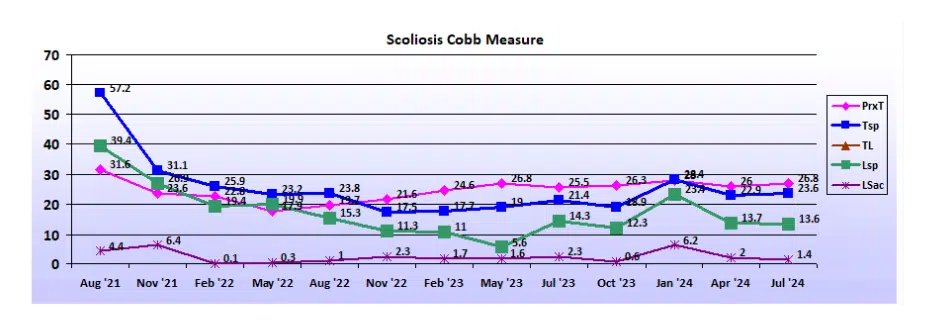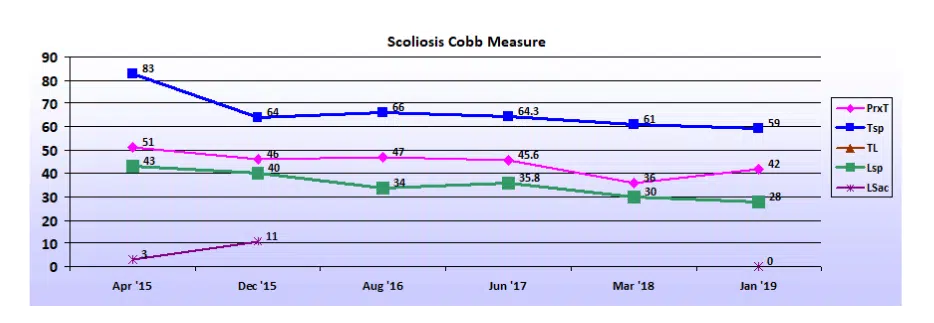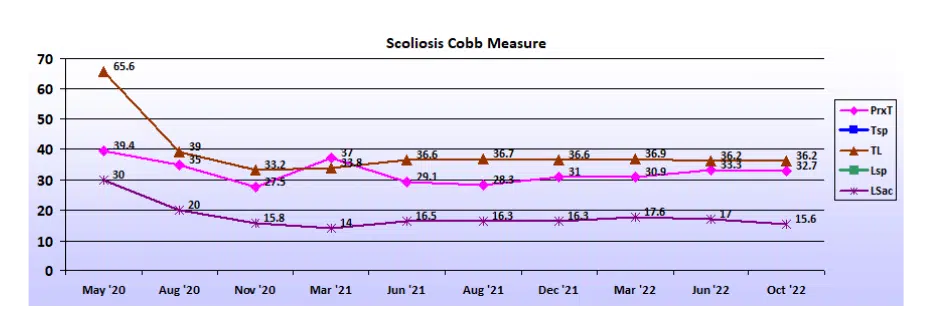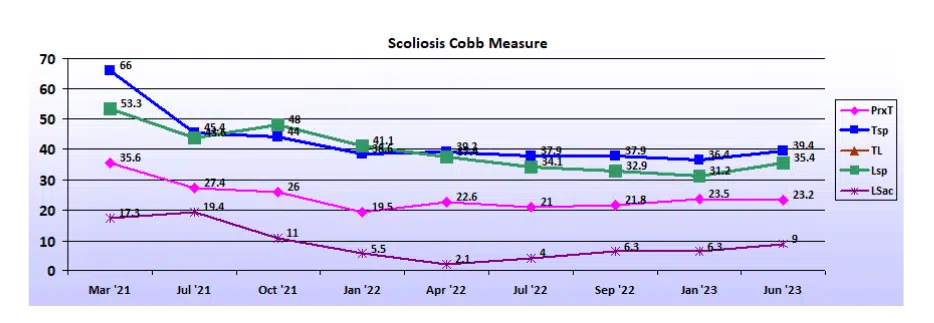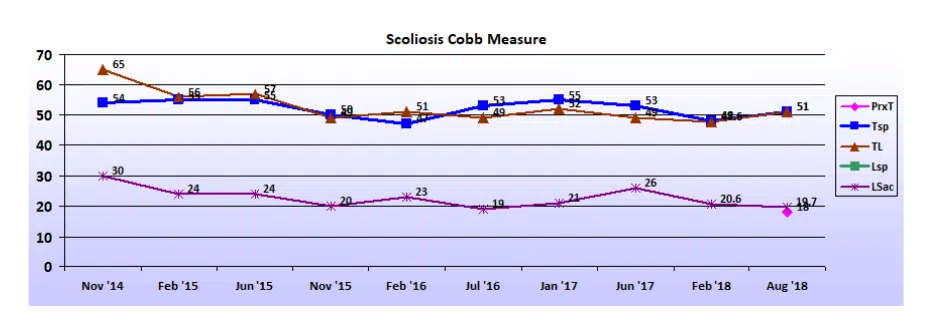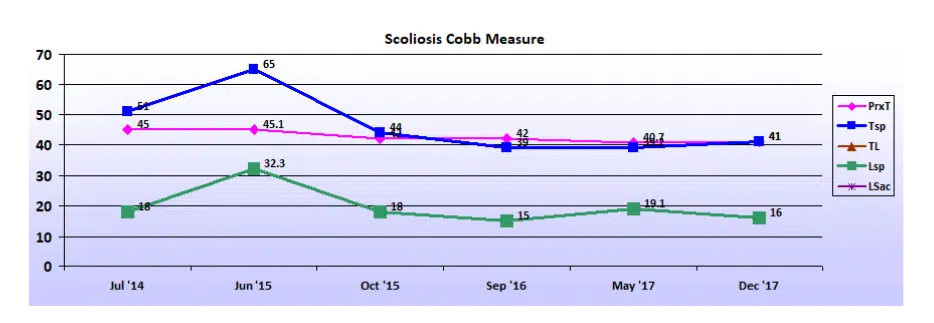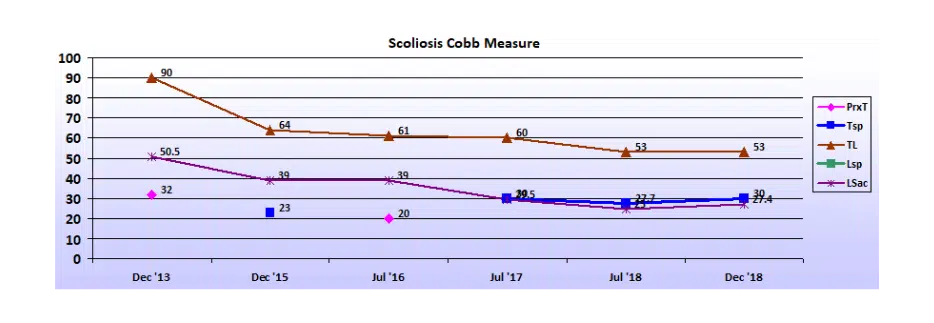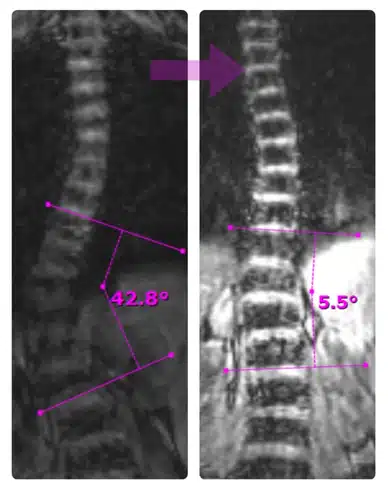
Scoliosis Treatment Results by Curve Reduction
Scoliosis varies in degree and type, which means each case requires a unique approach to treatment. This section outlines the expected success rates, average reductions, and case studies for various curve based on your childs current curve size. This will help you understand the range of treatment results for similar cases.
Select your childs current curve range:
– The percentage of cases in this category that were prevented from progressing to surgical range (40 degrees)
– The average of ALL patients who started the program, not filtered for compliance. This includes patients who worked hard and those who did not
– Our largest percent reduction on record for cases that began with a Cobb Angle between 10 to 24 degrees.
– The percentage of cases in this category that were prevented from progressing to surgical range (40 degrees)
– The average of ALL patients who started the program, not filtered for compliance. This includes patients who worked hard and those who did not
– Our largest percent reduction on record for cases that began with a Cobb Angle between 25 to 39 degrees.
– The percentage of cases in this category that were prevented from progressing further in surgical range
– The average of ALL patients who started the program, not filtered for compliance. This includes patients who worked hard and those who did not
– Our largest percent reduction on record for cases that began with a Cobb Angle between 40 to 50 degrees.
– The percentage of cases in this category that were prevented from progressing further in surgical range
– The average of ALL patients who started the program, not filtered for compliance. This includes patients who worked hard and those who did not
– Our largest percent reduction on record for cases that began with a Cobb Angle between 51 to 64 degrees.
– The percentage of cases in this category that were prevented from progressing further in surgical range
– The average of ALL patients who started the program, not filtered for compliance. This includes patients who worked hard and those who did not
– Our largest percent reduction on record for cases that began with a Cobb Angle between 65+ degrees.
Search Case Studies by Rigo Patterns
Key Concepts
- Growth Stage: Early detection and treatment during a child’s growth phase can leverage natural growth to help correct the spine.
- Duration of the Curve: The shorter the curve’s duration, the less “stuck” it is, leading to better outcomes with nonsurgical treatments.
- Compliance: Following treatments and guidelines is crucial for successful outcomes.
- Early Detection is Key: The earlier we identify and treat scoliosis, the better the chances for a successful outcome without surgery. This approach not only enhances the likelihood of a straight spine but also improves the chances for a happy and healthy adulthood.
Progression Risk Calculator
Start by using our calculator to quickly assess the risk of scoliosis progression for your child. This tool, which relies on Lonstein et al.’s equation, takes into account three key factors: Cobb Angle, Risser Sign, and Age. Then, you can better understand your child’s unique situation.
Surgical Risk Calculator
Based on the most current research, you can estimate the likelihood that your child’s curve will progress to the point of requiring surgery. Additionally, our scoliosis surgical risk calculator will provide you with valuable insights, helping you to make informed decisions.
Want To Help Your Child Beat Scoliosis? Find Out How!
Additional Scoliosis Treatment Results by Curve Reduction and Stories

